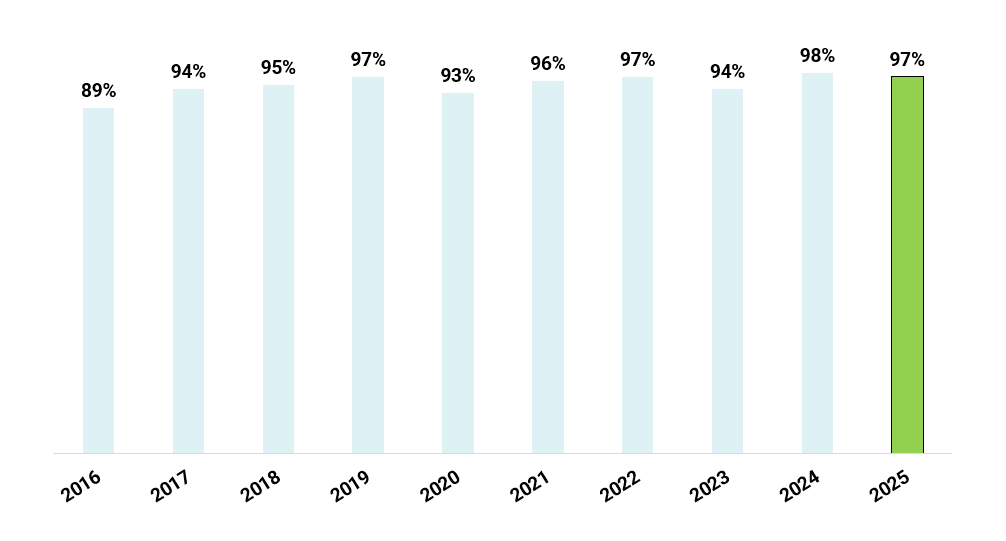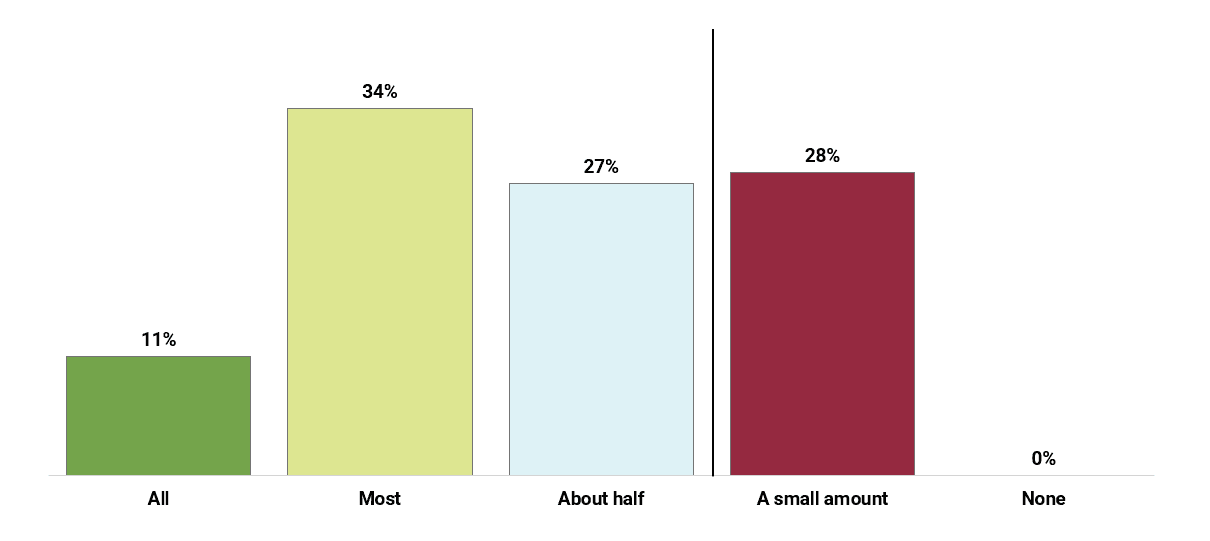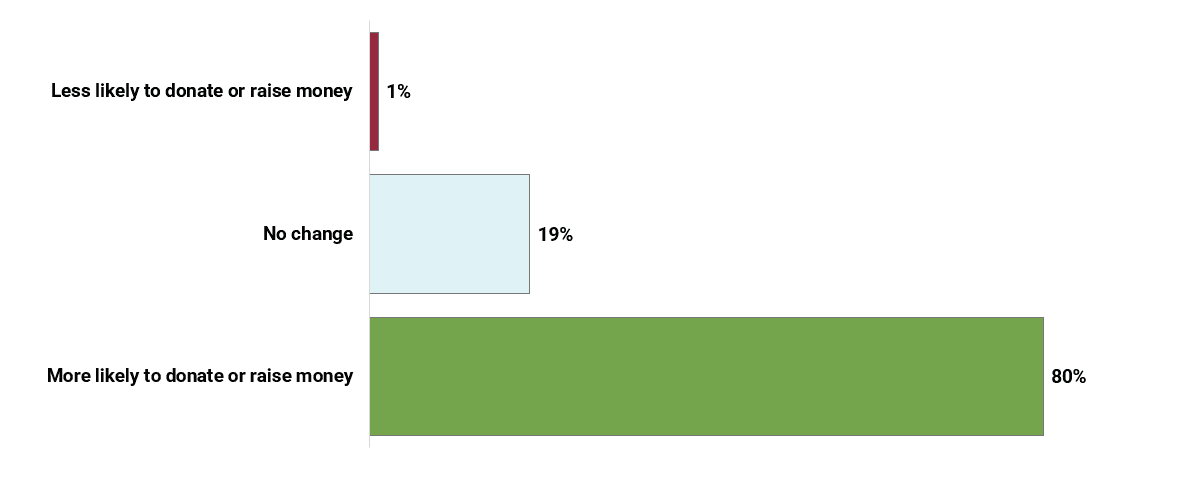
At a Glance
- 98% of respondents want the money raised at T1D fundraising events used for cure research.
- 72% believe at least half of all money raised at T1D fundraising events is used for cure research.
- 1/3 of donors are at risk of giving less in the years ahead.
- 80% will give more if T1D nonprofits dedicate 60% of all revenue to cure research.
- Donors in the T1D community want to be heard and to see what their money is funding.
September 18, 2025
The type 1 diabetes donor community is a powerhouse. From the occasional large, philanthropic gift to the stream of smaller contributions from dedicated and passionate community members, together, we contribute hundreds of millions of dollars each year. Every cent makes a difference, and advances in treatment options and curative research would not be where they are today without this unwavering support.
When money is raised by participating in or hosting fundraising events, several key questions arise: ‘What is the priority when we participate?’ ‘What do we want our money to fund?’ and ‘What is most important to T1D donors?’
Each year, JDCA directly asks T1D supporters these questions through a widely distributed survey. A summary of this year’s results is presented below.
Cure Research is Priority #1
97% report that finding a cure is the most important reason they participate in a T1D fundraising event.
98% believe the majority of money raised at fundraising events should be used for T1D cure research.
This data aligns with findings that stretch back to when this annual survey was first fielded (see chart A). It is clear: T1D donors prioritize a cure.
This finding does not indicate that efforts in other areas, like prevention, delay, and general management, are unimportant. But none are as important to T1D donors as finding a cure. For people who have lived with T1D for many years, prevention and delay solutions do not remove the burden.
Chart A: Finding a cure for type 1 diabetes is the most important reason I participated in a T1D fundraising event (% Agree)

We Still Believe in the Myth That Most Donations Fund Cure Research
72% of respondents said that they believe ‘half,’ most,’ or ‘all’ of the money raised at T1D fundraising events is used for cure research (see chart B).
This belief continues to persist despite its inaccuracy. Breakthrough T1D and the American Diabetes Association (ADA), two of the largest and most well-known diabetes-focused nonprofits, spent only a fraction of their revenue on research grants in the most recent fiscal year.
Chart B: How much of the money raised at diabetes fundraising events do you believe is used to fund T1D cure research?

Nonprofits Risk Losing Faith
The next set of questions pertained to Breakthrough T1D and the ADA. In the questions, JDCA pointed out the actual amount of revenue allocated to T1D research grants in 2024. Donors were then asked how this information impacted their likelihood of participating in fundraising events in the future.
29% of donors are less likely to or will stop participating in Breakthrough T1D events after learning the organization dedicated only 40% of revenue to research grants.
76% of donors are less likely to or will stop participating in ADA events after learning the organization gave less than 5% to T1D research grants.
51% of survey takers are now unsure if their chosen T1D nonprofit accurately represents their values. Despite this, there is opportunity to restore and strengthen donor faith.
Restoring a Commitment to Cure Research is VERY Motivating
Although there is a real risk that donors may lose some faith in larger T1D nonprofits, there is also a clear way to address this: Restoring and doubling down on cure research funding. This would result in a strong win-win situation for both parties (see chart C).
It is highly motivating to donors and fundraising participants to see their top priority—funding cure research—reflected as such from large diabetes nonprofits. If these organizations placed cure research as a, if not the, priority, it would rally donor support and increase donations that could be deployed to further a cure.
Chart C: If your T1D nonprofit of choice committed to growing its cure research budget to more than 60% of its annual revenue, how likely would you be to donate and/or raise money for it?

Donors Want to Be Heard
Donors place great importance on knowing how their contributions will be used and want to have a mechanism in place to express their wishes. Strengthening this type of two-way dialogue and improving transparency is good for nonprofits and donors alike.
91% of donors say it is very or extremely important to know how their donation will be used.
77% believe there should be a mechanism in place for nonprofits to follow donor wishes when making research funding decisions.
